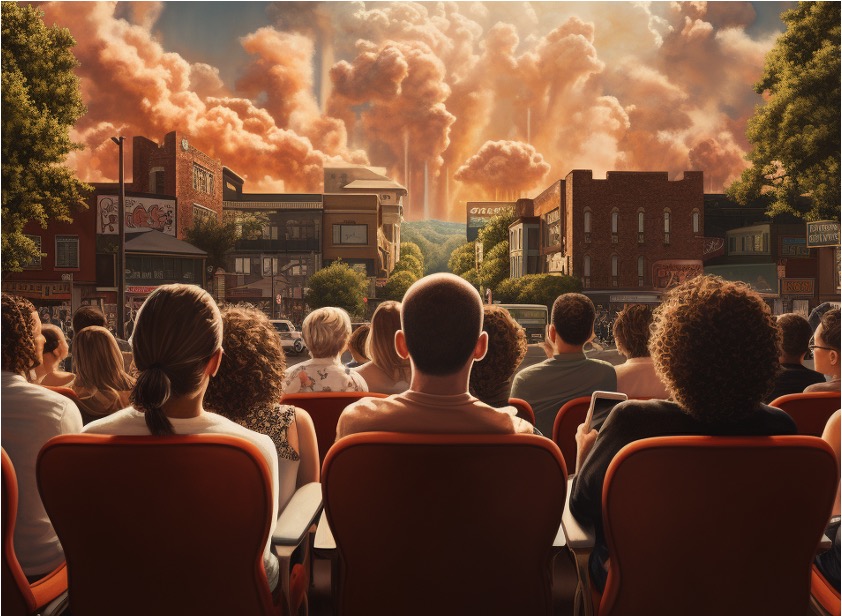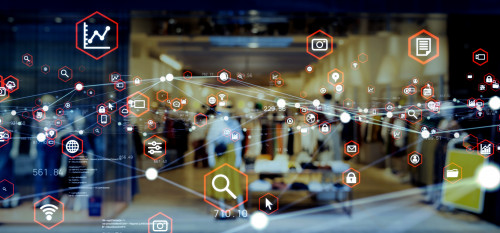A new wave of democratized power, taste, and influence sets up volume 2 of our 2023 top trends.
Pop Nihilism: Playing with the Apocalypse
In an increasingly uncertain world plagued by climate crises and economic tensions, people are leaning on dark humor and dystopian content to cope, a trend we call Pop Nihilism.
Last month, 41% of US adults told us they find apocalypse-themed entertainment to be extra entertaining.* When The Last of Us debuted earlier this year, viewers clung to the story of two protagonists embarking on an epic journey as a deadly virus took over the world, forging a close bond in the process. Fans deeply resonated with the story’s themes of grief and isolation, resulting in it becoming HBO’s second-largest debut. Despite the show’s ominous premise, reactions on social were led with humor and creativity, with content ranging from apocalypse outfit inspo to POVs: zombie apocalypse edition.
As more strive to find the light in tense moments, people and brands alike are finding ways to infuse their entertainment and experiences with a generous dose of darkness.
Stunts That Stun
Fashion is serving as a powerful medium for amplifying human experiences and depicting bleak realities. This summer, Hermès teamed up with artist Job Smeets to craft window displays for its French stores that visualize summer on Mars. With scenes depicting a french fry shop atop a volcano and a fire-spewing fire hydrant, the display humorously imagines a human-colonized Mars after climate change dooms Earth. Brands like Hermès are using artistic stunts not only to showcase their products but also to shed light on deeper, darker themes that provoke contemplation.
Apocalyptic, Emotive Immersions
Brands are tapping into the nihilism zeitgeist by crafting experiences that go beyond sight and sound, targeting a deeper emotional core. Teleporting participants into fear-inducing plots, the immersive digital and live experience company Darkfield turns shipping containers into mystifying venues. Coupled with 360-degree audio and multisensory technology, Darkfield injects users into scenarios ranging from simulated airplane crashes to eerie séances. Interest in Darkfield events reached a new high this year, with 32,000 securing tickets to fan-favorite experiences as the company continues to tour across the globe. In the world of dining, Tokyo-based restaurant Neo Shinjuku Atushi transports guests to a dystopian world. The restaurant, which opened this summer, features menu items like vacuum-packed bagged burgers and insect-infused sake. In this evolving landscape of immersive experiences, brands are turning dystopian escapes into the new thrill ride.
Brand Implications
As we approach 2024 and an election year, we expect to see this fresh trend continue to mature and evolve. People are embracing the complexities of the world in unexpected ways, and brands beyond the fashion and entertainment space have the chance to join in with a touch of levity. Whether through the power of art, humor, or attention-grabbing stunts, brands can make people feel seen and validated as they navigate a tense world on their own terms. For example:
- Real Estate: Looking for a house is no easy feat. Couple that with rising interest rates, talks of a recession, and decision overload, what’s left is a recipe for turmoil. A real-estate brand can launch a “Homebuyer Hellscapes” social media campaign, where they leverage fictional characters navigating the home buying process and creatively highlight specific challenges and fears (e.g., industry jargon), by personifying them as unique monsters in each episode. Prospective homeowners can get candid and share their awkward and most memorable homebuying experiences under the #HomebuyerHellscapes hashtag, using humor to alleviate stress and anxiety associated with the process.
- Grocery: In an industry where waste runs rampant, a supermarket can use art and collaboration to help shoppers reflect on consumption habits. Team up with local artists to craft the structure of a mural that tells the tale of food and material waste using wilted produce and discarded packaging. Add a clock as a bleak reminder that given the rate plastic decomposes, the mural will likely outlive shoppers and perhaps even the store. As customers wrap up at checkout, provide them with supplies to add their own creative touch to the mural. Serving as both an educational tool and interactive activity, encourage shoppers to post their additions on socials to extend the impact.
*Source: Horizon Media Finger on the Pulse. Survey Fielded November 13-November 21; n=1,001




